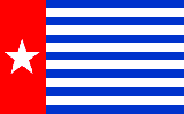Upstream oil and gas regulator BPMigas said on Tuesday that the government was currently negotiating with US-based Sempra Energy to take back 3.7 million tons per annum (mtpa) of liquefied natural gas (LNG) allocated for the company.
BPMigas’ deputy for operations, Rudi Rubiandini, told The Jakarta Post that the government aimed to take over as much LNG as possible from the company to allow it to decide where to allocate the gas amid mounting pressure from domestic buyers for more gas supply.
“We are negotiating with Sempra on the future of the LNG allocation; however, we will ensure that we comply with all clauses in the contract, including penalty payments and other details,” he said.
“We hope we can take back more than 75 percent of a total allocation of 3.7 mtpa,” he added.
Sempra receives an LNG allocation from the Tangguh LNG plant in Papua, which is operated by BP.
Under the contract between the government of Indonesia and Sempra, the government is allowed to divert half of the allocation for the company — around 1.85 mtpa — to other parties for a diversion fee of 50 US cents per million British thermal units (mmbtu).
BPMigas revealed earlier that the diverted gas would be allocated for the planned floating storage and re-gasification unit (FSRU) in Belawan, North Sumatra, which was scheduled to begin commercial operation in 2013.
Should the government be successful in taking over Sempra’s LNG allocation, the Energy and Mineral Resources Ministry would then decide where the gas would be utilized, Rudi said. “It is the authority of the government to determine where the gas will be channeled. BPMigas will do whatever the government decides,” he said.
According to BPMigas, the Tangguh LNG plant exported a total of 115 cargoes in 2011, jumping from only 79 cargoes a year earlier, which comprised 4 cargoes to Japan, 21 cargoes to Korea, 35 cargoes to China and 55 cargoes to the US.
Production from the Tangguh plant is expected to increase following a plan to build the third LNG train with a total capacity of 3.8 mtpa.
The plant currently has two trains with capacity of 3.8 mtpa each. BP started the operation of the first train in February 2009 and the second train in July the same year.
Tangguh is a massive gas project located in the Bintuni Bay area of West Papua, where there are total proven gas reserves of at least 14.4 trillion cubic feet. If production runs at 700 million standard cubic feet per day (mmscfd), the gas will run out in approximately 55 years’ time.
Indonesia is the world’s third largest LNG exporter after Qatar and Malaysia. Last year, the country sent 362 cargoes abroad. Of that amount, 22 cargoes were contributed by the Arun LNG plant in Aceh, 222 cargoes from the Bontang plant in East Kalimantan and 115 cargoes from Tangguh.
In 2010, the country’s LNG exports reached 427 cargoes comprising 33 cargoes from Arun, 315 cargoes from Bontang and 79 cargoes from Tangguh.
